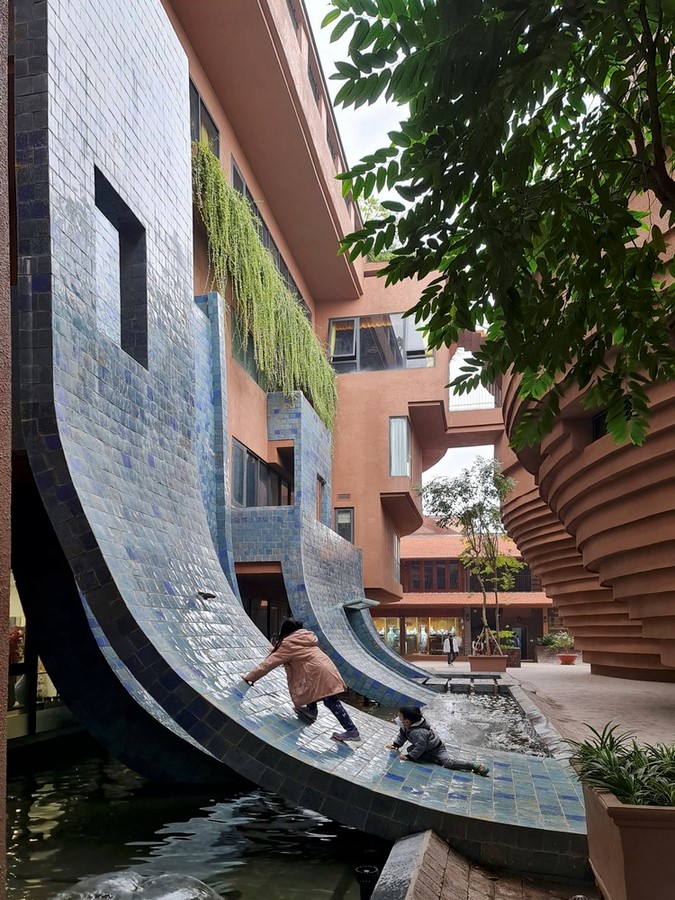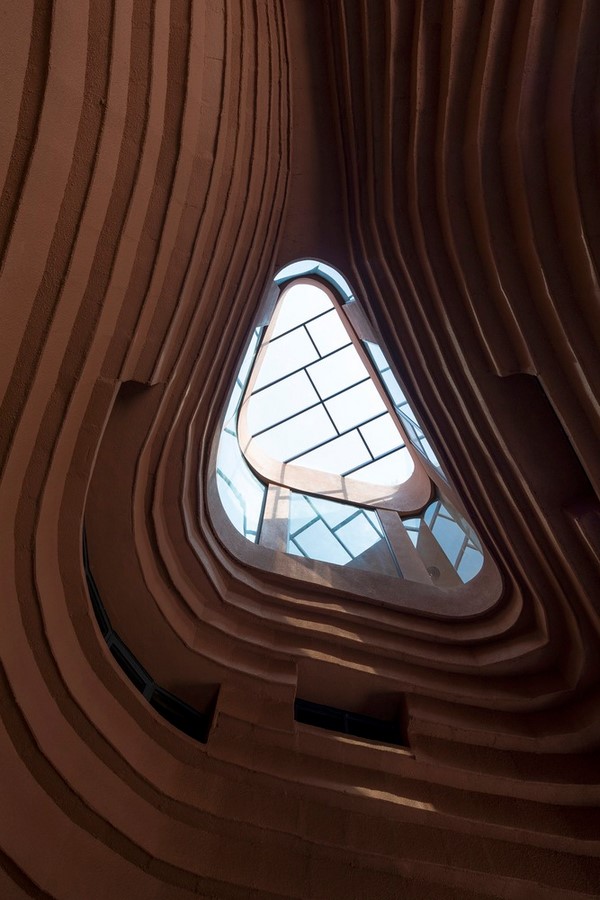
Preserving Pottery Craft in Vietnam
In the heart of Vietnam, the Bat Trang Ceramic Community House stands as a testament to the rich legacy of the nation’s pottery craft. Crafted by 1+1>2 Architects and operational since 2021, this architectural marvel is not merely a structure but a key component of “The Center for Quintessence of the Vietnamese Craft Village.” With an investment of 150 billion VND, the project aimed to foster the growth of craft villages and uphold the traditions of a pottery craft dating back over 500 years.

Village Planning and Integration
The Ceramic Community House, constructed over three years, strategically positions itself at the village gateway, extending a warm welcome to tourists. Overlooking the Bac Hung Hai canal and linked to the Red River, the architecture is meticulously designed. Its form ensures optimal control of construction density and height, contributing to harmonious proportions, breathtaking views, and a revitalized landscape around the ancient pottery market.

Architectural Ingenuity
Functioning as a vital component of village planning, this 5-storey multi-functional complex boasts an architectural form inspired by seven interlocking ceramic wheels. Symbolizing the motion of a ceramic artisan molding clay, the structure weaves overlapping curves that gradually expand. This not only creates an aesthetically pleasing volume but also serves functional purposes such as displaying ceramics and facilitating movement between floors. Another perspective reveals a striking resemblance to Bat Trang’s antique gourd furnace.
A Palette of Tradition
To evoke the rustic charm of the pottery village, the architects embraced a predominant theme of reddish-brown – a color reminiscent of rough ceramics. The design pays homage to the village’s heritage by incorporating familiar materials like Bat Trang bricks and tiles.

Harmony in Design and Functionality
The Bat Trang Ceramic Community House serves as a cultural beacon, seamlessly blending tradition with contemporary functionality. Beyond its architectural significance, it stands as a living testament to Vietnam’s enduring craftsmanship and commitment to preserving the essence of its craft villages.















